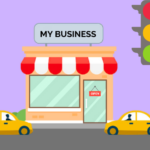How do you get the attention of your visitors without completely interrupting or annoying them? This is a tightrope that marketers must walk, with each new visitor. Grabbing the visitor’s attention is becoming more difficult with time as the attention span of the visitor continues to shrink.
It’s a constant battle that marketers have to fight to put potential customers and new visitors on a clear road to initiate action. Perhaps the most effective way to do this is with pop-ups. While most marketers may find pop-ups a way to capture emails, some savvy marketers have found creative and effective uses of pop-ups to drive desired actions.
If you think pop-ups are annoying, distracting, or invasive, you’re still living in a bubble. Pop-ups can be effective, appeal to your website visitors and enhance their experience.
This article will discuss the pros and cons of using a pop-up and how online businesses should use them to boost engagement, capture email, convert more leads and earn loyalty using the tips below.
But the question is whether to pop up or not to pop up?
Pop-up ads aren’t anything new to the web world. But if you think you’re seeing them more often as ads, you’re right. If you visit any site today; you will see a pop-up with a call to action on it. It could be for a newsletter or blog subscription, to sign-up for some offer or get downloadable from the site, they are everywhere.
If you’re thinking to add a pop-up to your site, you should consider the pros and cons associated with them. We’ve covered a few for you below.
The pros of using pop-ups on your website-
Google update confirms that there are still some positives to using pop-ups for desktop traffic:
Higher Conversions | Pop-ups expedite the conversion process. Many case studies have established that pop-ups are a great way to increase the lead count.
The Demand Attention | While taking over the entire screen isn’t subtle; it does draw attention.
They Focus on One Message | With so many messages on your site, pop-ups allow you to concentrate on just one call to action (CTA).
Huge ROI Potential | Pop-ups don’t cost a penny, so the ROI potential is massive.
They’re Less Intrusive Now | A variety of pop-up variations are designed to be less intrusive on the user experience.
The cons of using pop-ups on your website-
Pop-ups have always been annoying for one reason or the other. Much before Google rolled out its algorithm, marketers already had a list of reasons not to use pop-ups.
They are Annoying | This is especially true for full-screen intrusions.
The Block Content | They are slow to load, so by the time users have already started reading your content pop-ups block their view.
The Force a User to Act | It’s great if they convert, but it just emphasises your intrusion if they don’t.
Bounce Rate | Users may quite often leave your site without taking any action.
You Lose Other Potential Leads | Even if your pop-ups generate leads, interrupting user sessions will result in the loss of other potential leads.
They Can Damage Brand Reputation | Pop-ups’ spammy nature isn’t exactly a confidence booster for customers.
Pop-ups are Awful on Mobile | We’re glad Google penalises sites for showing pop-ups to mobile traffic.
Now that we have discussed the pros and cons of using a pop-up on a website, let’s share some tips on how to use a pop-up on your website. We’ve prepared a list of some to-dos and don’ts that you need to follow when adding a pop-up to your landing page.
Do’s
Make Sure Your Reader Has a Way to Exit Out of it | Nothing is more irritating than being hit with a pop-up that refuses to go away. At least 99.9% of the time, people will stop trying to get out of the pop-up, and instead, try to get out of your site.
Make Sure it Works | If it’s a plugin, you should update it regularly anyway. If you’re asking people to give you their email addresses for a newsletter, make sure you test the entire process to see what the user is going through.
Keep it Simple | People are less likely to fill out a form if it requires a lot of information. Ask for nothing more than their email addresses unless it’s necessary.
Consider Placement | You need to think about when and where do you want your pop-up to appear. Does it depend on what do you expect from it? If you want people to subscribe to your mailing list, consider having it trigger towards the end of the blog. If it’s to download a PDF, then at the time they land on the site might be the best option.
Don’ts:
Don’t Use Multiple Pop-ups | Using multiple pop-ups is not worth it. One should be enough to propel action for you. Again, less is more.
Keep it Simple and Light | Have you ever come across a pop-up trigger that takes forever to load? That’s because the designer didn’t optimize the image and loaded a large image into it. So, the text is quick to show, but not the image.
Don’t Make it Lengthy | That is something that no one has the time or patience for. In less than 2/10ths of a second, your visitors will decide whether they want to engage with your pop-up or leave.
Don’t Do it Without an Action Plan | Have an action plan in mind, know what you want the pop-ups to do. Don’t confuse the visitor with multiple goals. If your goal is to get newsletter subscribers, make that the only focus. If you want them to download a PDF, make that the only focus. Have one goal at a time.
Summing-up
So, are you ready to put pop-ups on your site? Which goal do you think would be most effective for your brand?
Hopefully, this article has given you a solid understanding of the pros and cons of using a website pop up and how you should be adding it to your page. Pop-ups can indeed be annoying but if they didn’t work so well marketers around the world would not have invested in them. If used properly then it’s a great inclusion in your marketing strategy. Pop-ups can be used to capture leads, increase sales act to get answers to survey questions, and more.
If you want more traffic flowing to your site, more people interacting with your brand and last but not least more customer conversions, well, you need to outsource your digital marketing service to Shergroup. If you need to get your marketing moving in the right direction talk to Shergroupies about how they can help you drive your traffic, so it’s moving forward for you and your business. The Shergroupies are standing by to help you on this important mission because we love minding your business. Mail us at [email protected] to discuss your requirements in detail.






